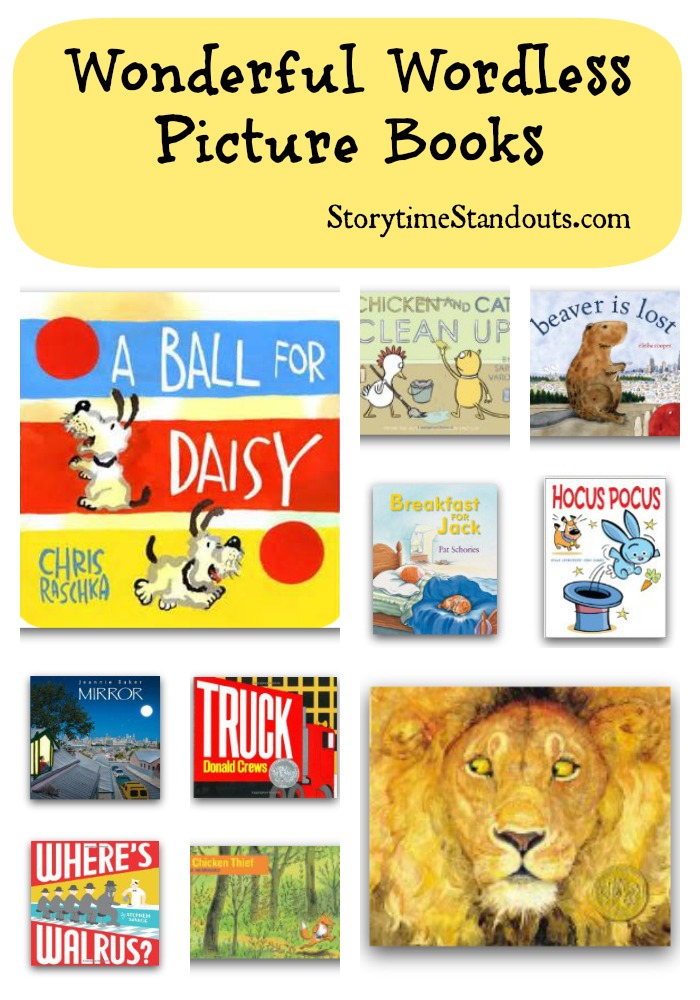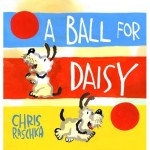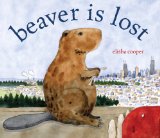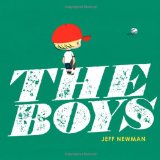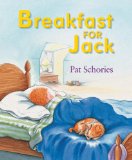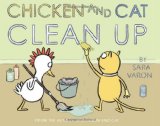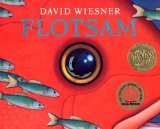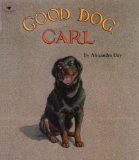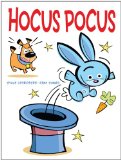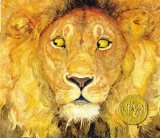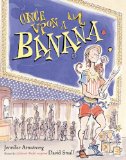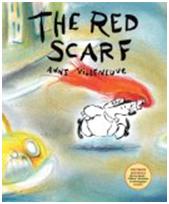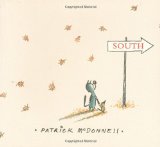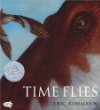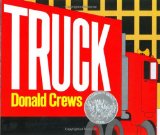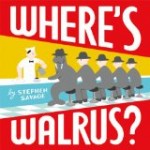Wordless
Storytime Standouts looks at wordless picture books and explains why they belong on every child’s bookshelf

Wordless and almost wordless picture books rely exclusively on illustrations to tell a story or convey facts. Some wordless and almost wordless picture books have a small amount of text but most do not have any text at all.
Wordless and almost wordless picture books encourage children to take an active role in telling a story. Typically, when enjoying a wordless picture book with an adult, the illustrations and meaning are discussed, and as a result of the conversation, the child’s language development is stimulated.
Great wordless picture books clearly show action and sequence so the narratives are easily understood. Once a child has ‘read’ a wordless picture book with an adult, he should be encouraged to share the book with someone else. Making an opportunity to reconstruct and retell a story is valuable for a young child because reconstructing and retelling a story is a way to confirm comprehension.
Wordless and almost wordless picture books can be enjoyed in any language or in many languages. In a multilingual community or family, the versatility of wordless picture books cannot be overstated.
Children’s Author Elizabeth Laird discusses Wordless Picture Books
Highlighting a Selection of Wordless Picture Books
A Ball for Daisy – created by Chris Raschka
Wordless picture book published by Schwartz and Wade Books, an imprint of Random House

Have you ever suffered the loss of a favorite toy? Perhaps it was broken beyond repair? Daisy is an adorable little dog, oozing with personality. She loves her beautiful red ball. Daisy kicks it and bounces it and snuggles with it on the sofa. One day, while enjoying a walk, Daisy encounters a doggy friend who is too exuberant and accidentally punctures the red ball. Daisy is inconsolable; she can’t believe what she sees and she tries everything to make her red ball whole again. Unfortunately, the ball has been destroyed.
Thankfully, Daisy’s friend understands her distress and, when she next visits the park, a lovely new blue ball is waiting. Breezy, bright illustrations, perfect for sharing with a group, guide readers (and non “readers”) through A Ball for Daisy.
A Ball for Daisy won the 2012 Randolph Caldecott Medal. Best suited to preschool-age children.
A Ball for Daisy at Amazon.com
Beaver is Lost created by Elisha Cooper
Almost wordless picture book, published by Schwartz and Wade Books, an imprint of Random House

When beaver floats away from his dam and his three friends, he soon finds himself surrounded by hardworking people and their enormous machines. The workers are loading lumber onto a truck.
Beaver hops aboard a fully loaded truck and hitches a ride to the city. Once there, he scampers away from the truck. A snarling dog chases him through a hole in a fence and into a backyard. Leaving his new enemy behind, Beaver swims through an alligator-toy infested pool and is eager for further adventures. It is not long before he discovers the city zoo and some distant relatives. Escaping a surprised zookeeper, he dives into a duck pond on his way into the busy city.
Our ever-resourceful new friend is not one to shy away from drainpipes, crowds of people, stairways or bodies of water. Happily, as the sun sets, his exploits lead him to a familiar river and a welcome home. Readers are left to wonder whether Beaver was truly lost – perhaps he just possesses an adventurous spirit.
Beautiful watercolour cityscapes and waterscapes together with fast-paced frames and an engaging story highlight Beaver is Lost. Highly recommended for children aged four and up.

For older children, possible extension activities for this almost wordless picture book could include devising further exciting adventures downstream.
The Boys created by Jeff Newman
Almost Wordless Picture Book published by Simon and Schuster

When a young lad moves houses with his family, he is anxious to find a baseball game in his new neighbourhood. He unpacks his glove, bat and spikes and ventures out.
Once he arrives at the park, he hesitates, watching from afar. Rather than joining the kids’ game, he is dejected. He slowly approaches a park bench and sits down. Four ageing men are already seated, feeding the pigeons.
The following day, the boy stores his baseball gear away and joins the men sitting on the bench. He helps to feed the pigeons.
The men take note of his appearance when he joins them a third time. He looks old – probably much older than they feel! It is time for action.
The men give up sitting on the park bench, instead, they play on the monkey bars and the slide. They are smiling and laughing. They have been transformed. When a bike awaits the boy the following day, it is clear the men think it is time to get moving – they climb onto bikes, a scooter and a wagon, annoying the pigeons and our boy. He just wants to sit.
Little does he know, a plan is afoot. On Sunday the men will play a baseball game. They supply a batting helmet and a bat, and watch as their hesitant young friend hits one “out of the park.”
Confidence regained, the youngster approaches the boys and girls playing at the park and joins their game. The cronies cheer from the stands.
There is much to love about The Boys. Boldly illustrated, the almost wordless story introduces themes of social isolation, self-confidence, ageism and the value of play. Readers will find it both thought-provoking and reassuring.
Suitable for children kindergarten age and older.
One of Kirkus Reviews’ 2010 Best Children’s Books
Breakfast For Jack Created by Pat Schories
Wordless picture book (first in a series) published by Front Street, an imprint of Boyds Mills Press

Jack is an adorable orange and white terrier, brimming with personality. One busy morning, his family gets up, feeds the cat, eats breakfast and rushes off to school and work. Sadly, no one remembers to feed Jack. He is completely bewildered by the situation and he does his best to remind them that he is hungry. It is not until they are all out the door that his best pal remembers to feed him.
The Jack series is a great introduction to the wordless picture book genre. Relatively simple storylines will be easy for youngsters to understand. As well, the size of the books (7″ wide X 8 1/2″ high) makes them well-suited to small hands. Best for children aged three years and up.
Breakfast for Jack at Amazon.com
Breakfast for Jack at Amazon.ca
Chicken and Cat Clean Up written and illustrated by Sara Varon
Wordless picture book published by Scholastic Canada

In Chicken and Cat Clean Up we follow the misadventures of two dissimilar friends who operate a housekeeping business. The bright, cheerful illustrations provide a fun account of operating a small buiness, an enduring friendship and how an opportunity for heroism might be just around the corner.
Really good fun for kindergarten and up!
Chicken And Cat Clean Up at Amazon.com
Chicken and Cat Clean Up at Amazon.ca
The Chicken Thief created by Beatrice Rodriguez
Wordless picture book published by Enchanted Lion Books

Bear and Rabbit are just sitting down for a meal when one of their chicken friends is scooped up by Fox. Shocked at the brazenness of Fox’s thieving behavior, Bear, Rooster and Rabbit are outraged and are soon in hot pursuit.
Before long, Fox and Chicken have entered the deep, dark woods and Rabbit, Bear and Rooster are tiring. When they bed down for the night, Chicken can see her friends, in the moonlight. The following day, Chicken is remarkably relaxed, playing checkers with Fox and sleeping curled up, next to her abductor. The chase continues and as she and Fox take off in a boat, she does not look the least bit frightened. In fact, she wears sunglasses and reclines comfortably at the bow. When her three bedraggled friends finally catch up to Fox and Chicken, they are ready for a fight and surprised at what they discover.
Youngsters will thoroughly enjoy carefully examining the small details included in the ink and paint illustrations. Great fun for preschool and up.
Publisher’s Weekly Best Children’s Books of 2010
School Library Journal Best Children’s Books of 2010
A Cooperative Children’s Book Center Choice, 2011
The Chicken Thief at Amazon.com
The Chicken Thief at Amazon.ca
Flotsam created by David Wiesner
Wordless picture book published by Clarion Houghton Mifflin Harcourt

Here, we join a boy and his family as they spend a day at the beach. Clearly an enthusiastic scientist, he arrives equipped with binoculars, a magnifying glass and a microscope. As he searches for interesting ‘flotsam’, a huge wave crashes over him and leaves an old underwater camera just above the waterline. The boy races to a nearby shop and waits as the film is developed. When handed the photos, he can’t believe what they reveal. Flotsam is truly a ‘treasure chest’ of visual delights.
Flotsam won the 2007 Randolph Caldecott Medal and is a picture book for children in the primary grades.
Good Dog, Carl created by Alexandra Day
Almost wordless picture book published by Simon and Schuster

This immensely popular almost wordless picture book will be thoroughly enjoyed by dog lovers and young mischief makers. When Mother goes out for awhile, she asks her pet rottweiler, named Carl, to look after the sleeping baby.
Carl watches at the window as Mother leaves and then lowers the crib rail and waits patiently while Baby Madeline climbs onto his back. Carl provides loving care for the infant, bouncing her on Mother’s bed, playing dress-up and meeting her at the bottom of the laundry chute. When the baby goes for a dip in the family fish tank, Carl is nearby, ensuring that she is swimming safely. Eventually, Carl makes lunch for Madeline, returns her to her crib and tidies the house thoroughly before her unsuspecting mother returns home.
Once readers get over their shock at the idea of leaving an infant at home alone with a dog, they will enjoy the silliness alongside Carl’s gentle and devoted caregiving. Carl is utterly loveable and Baby Madeline is clearly having a grand time.
Good Dog, Carl is the first of seventeen wordless picture books about Carl and Madeline. Available in a variety of formats including board book and paperback, the hardcover measures 7.6 x 8.5 inches and is designed appropriately for small hands to grasp. Suitable for toddlers and preschool-age children.
Hocus Pocus – story by Sylvie Desrosiers, illustrations by Rémy Simard
Wordless picture book published by Kids Can Press

When Mister Magic arrives home with his top hat, Dog and a bag full of groceries, he is ready to relax. He puts on headphones, sits in a comfortable chair and listens to music. Before long, Mister Magic and Dog are both fast asleep and Hocus Pocus, a mischievous rabbit, is scrambling out of Mister Magic’s top hat. Hocus Pocus sees Mister Magic’s carrots peeking out of the grocery bag and wants one. He worries about awakening Dog and is soon plotting ways to avoid the canine and his sharp teeth.
Retro illustrations (created with Adobe Illustrator) and the messy, farcical battle between Dog and Hocus Pocus give the story a cartoon-like feel.
Hocus Pocus is great fun and will be enjoyed by children aged four and up.
Hocus Pocus Printables from Kids Can Press
The Lion and the Mouse created by Jerry Pinkney
Almost wordless picture book published by Little, Brown Kids

The story of the lion and the mouse is an Aesop’s fable that every child ought to know well. The lion, powerful and dangerous resists an opportunity for bullying and, instead, is kind to a small mouse. Later, when the lion is trapped in a hunter’s net, the grateful mouse has an opportunity to return the favour. He chews the rope net and eventually manages to free the lion.
Jerry Pinkney has created a masterful, almost wordless version of The Lion and the Mouse. From cover to cover, beautiful illustrations depict the African Savanna and the animals found there while telling the story of a compassionate lion and his small friend. Winner of the 2010 Randolph Caldecott Medal and also a New York Times 2010 Best Illustrated Book and a 2010 Horn Book Awards Honor Book, The Lion and the Mouse relies upon the illustrations to tell the story. Pinkney only uses words to describe animal sounds.
Highly recommended for both classroom and home libraries, The Lion and the Mouse could be used to explore many themes including anti-bullying, friendship and stereotyping.
The Lion & the Mouse at Amazon.com
The Lion & the Mouse at Amazon.ca
Mirror created by Jeannie Baker
Almost wordless picture book published by Candlewick Press

Designed to be read side by side, Mirror is essentially two picture books. Once the reader opens the cover, she discovers a wordless picture book about an Australian family on one side and a parallel story about a Moroccan family on the other. Both stories begin at dawn.
We meet an Australian boy who lives comfortably in the suburbs with his mother, father and a baby. After breakfast, he and his dad climb into the family van and drive on crowded streets to ‘Hardware Planet.’ They buy construction materials and a beautiful woven carpet.
The Moroccan boy’s day begins with a breafast of fresh eggs, plucked from a hen’s nest, and milk just collected from the family cow. After breakfast, he and his father pack up a handmade carpet, climb onto a donkey and travel dusty roads to an open-air market. Once at the market, they make a trade that will likely surprise and delight young readers.
Mirror features remarkable collage illustrations and a fascinating concept. The book will be enjoyed by children aged five and up and offers ample opportunities for discussion – how individuals and families are alike and different and how seemingly very different cultures may not be “different” at all.
Mirror includes introductory comments and afterwords written in English and Arabic.
Once Upon a Banana written by Jennifer Armstrong and illustrated by David Small
Wordless picture book published by Simon and Schuster Canada

In this (almost) wordless picture book, hilarious events are set in motion when a small monkey tosses a banana peel onto a sidewalk. Before long it would appear that the entire town is upset – dogs break loose, a cyclist goes flying, a grocery cart is upended and, oh no, look at that baby carriage!
Terrific fun for children aged four and up.
Once Upon a Banana at Amazon.com
Once Upon a Banana at Amazon.ca
The Red Scarf – created by Anne Villeneuve
Almost Wordless Picture Book published by Tundra books

Turpin’s day is altogether too gray until an imposing figure climbs into his taxicab. Turpin delivers the gentleman to his destination and shortly thereafter discovers a bright red scarf on the seat of the cab.
Turpin chases after the mysterious man but is detained by a lizard on a unicycle. Once he explains his purpose, the lizard allows him to pass. Turpin soon finds himself surrounded by a bear on roller skates and a ravenous lion. Fortunately, the lion tamer is not far away and rescues him before the worst can happen.
Now, surrounded by amazing colour and exotic creatures, Turpin’s day grows stranger and stranger until he finds himself in the middle of a brightly lit circus tent. A parading elephant, a fire breathing juggler, a playful monkey, a tightrope and a magic trick all add to the hijinks as Turpin struggles to return the scarf.
Originally published as L’echarpe rouge, this almost wordless picture book won the 2000 Governor General’s Literary Award for Children’s Illustration.
Best suited to children kindergarten age and up.
South created by Patrick McDonnell
Almost wordless picture book published by Little, Brown

As the last leaf detaches from a tree, a large flock of yellow songbirds lifts to the sky. It is time to head South for the winter. The golden leaf slowly drifts downward until it lands on a snoozing bird. Awakened suddenly by the intrusive leaf, the drowsy bird is shocked to discover an empty tree. Where is the flock? Agitated and suddenly very lonely, the bird seeks help from Mooch and is devastated to learn that the flock has left for warmer climes.
Mooch pauses, thinks and extends his paw. Mooch will help the errant bird find the flock. Together, the two unlikely friends travel through a busy city, into a forest and through a snowstorm as they search for the flock. At times, Mooch carries the tired bird on his back. The unexpected friendship between the two deepens. When the weary pair finally hear the sweet sounds of the songbirds, they share a tender moment before parting company. Satisfied, Mooch returns home and curls up by a welcoming fire. Winter has arrived and his job is done.
South themes include loneliness, kindness, friendship and social responsibility. Printed on recycled paper, the almost-sepia tones match the mood and a story set in Autumn beautifully. Well suited to children aged four and up, South will be equally enjoyed by adults.
Time Flies – created by Eric Rohmann
Wordless picture book published by Dragonfly Books, an imprint of Random House

Time Flies is a gorgeous Caldecott Honor Book. One evening, in the midst of a thunderous storm, a lone bird enters an empty museum through an open window. The shadowy museum is home to a collection of dinosaur skeletons. The daring bird swoops through the displays and they transition from bare bones dinosaur skeletons to much more realistic renditions. When the saucy bird becomes a tease, two very lethal jaws snap shut.
Wonderful for children four years and older, Time Flies will have special appeal for dinosaur fans.
Time Flies was a Caldecott Honor Book in 1995.
Truck created by Donald Crews
Almost wordless picture book published by Greenwillow Books, an imprint of Harper Collins Publishers

Truck tells us the story of a large, red semi-trailer truck that is transporting a load of bicycles. The distinctive vehicle leaves one city, rumbling through a tunnel and eventually travelling overnight. Miserable weather and other trucks accompany the red semi-trailer filled with bicycles to a rural highway. Children will love the busy interchange and the foggy roadway leading up to a bridge and the approach to another city.
Young transportation enthusiasts will enjoy “reading” the roadsigns, learning about direction and examing the other vehicles as they follow the big red truck on its journey.
Highly recommended for truck lovers ages three and up.
Truck was as ALA Notable Children’s Book and a Caldecott Honor Book. It is available in a variety of formats including board book.
Wave – created by Suzy Lee
Wordless picture book published by Chronicle Books

When a young girl arrives at a beach, she is filled with enthusiasm and dashes forward, stopping just short of the beautiful, frothy blue water. She hesitates on the sand, pausing, leaning as she is drawn toward the ocean. Suddenly, the character of the water changes. Worried, she tentatively shifts backwards, her steps mirrored by a group of friendly gulls. As the waves reverse and retreat, our young heroine stands on her toes and challenges the salty water. Before long, she leaps into the dancing waves, joyfully kicking and splashing until an enormous wave erupts. The powerful crest leaves her sodden but excited when it deposits a bounty of shells on the sandy beach.
Children and adults will revel in this playful, wordless celebration of a day at the beach.
Gorgeous illustrations were created with charcoal and watercolours. Suitable for all ages.
Wave was selected New York Times Best Illustrated Children’s Book 2008
Where’s Walrus? – written and illustrated by Stephen Savage
Wordless picture book published by Scholastic

Where’s Walrus? is a stylish, bold look at a daring escape from the city zoo. While most of the zoo animals and their keeper nap, a walrus decides it is time for fun. His first destination is just outside the zoo gates. He jumps into a large fountain and reclines next to a stone mermaid. With the keeper in hot pursuit, he shifts to a coffee shop, a store window and a construction site. Later, he helps a crew of firefighters and joins a dance team. Each time Walrus moves, he changes his head covering and manages to evade detection. Young children will enjoy “finding” the walrus while the zookeeper searches in vain. For older children, the absurdity of the premise will add to the humor.
Where’s Walrus? will be an excellent addition to a classroom zoo theme. Extension activities could include choosing new a head covering and ‘hiding’ Walrus somewhere new.


